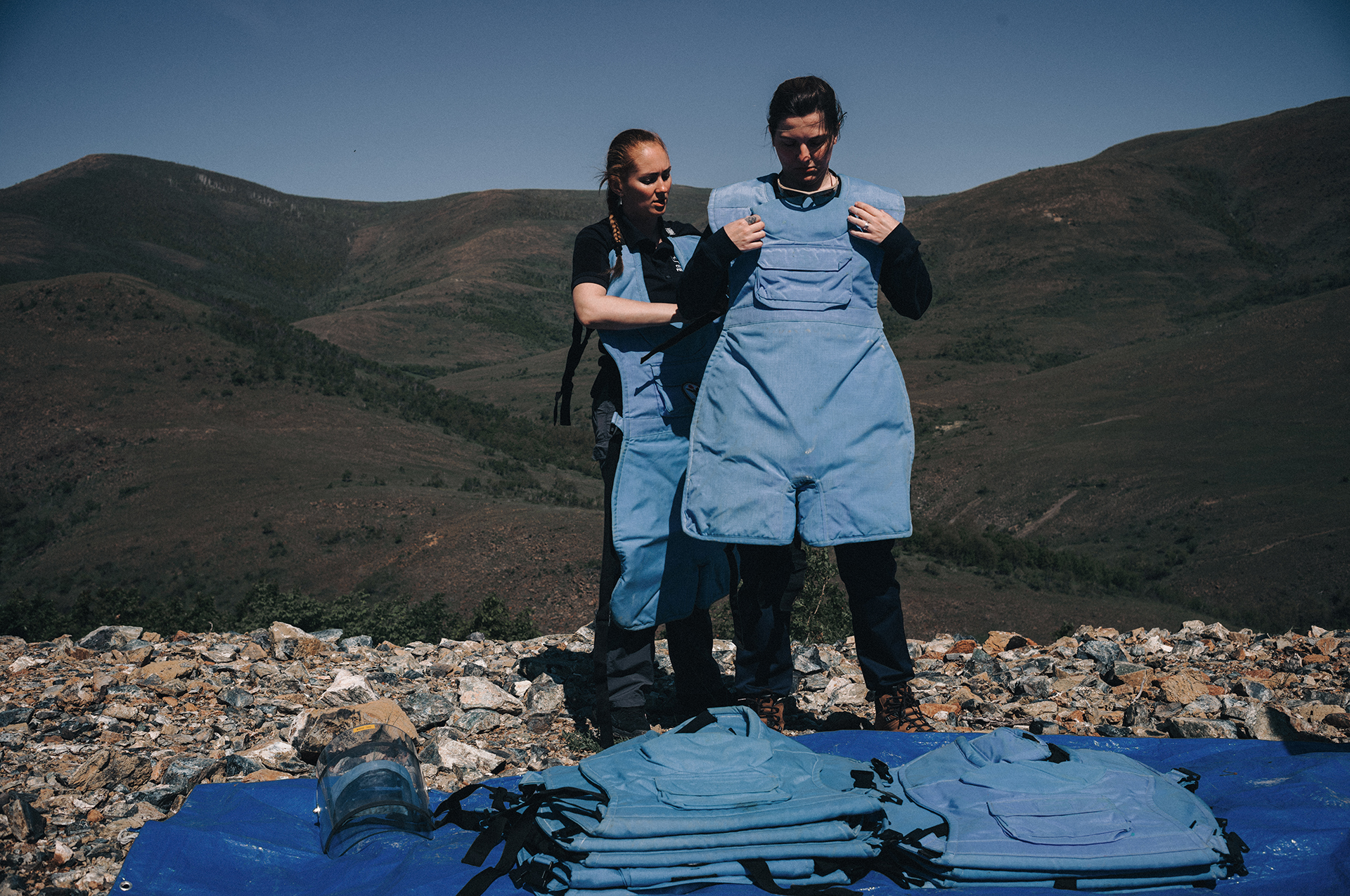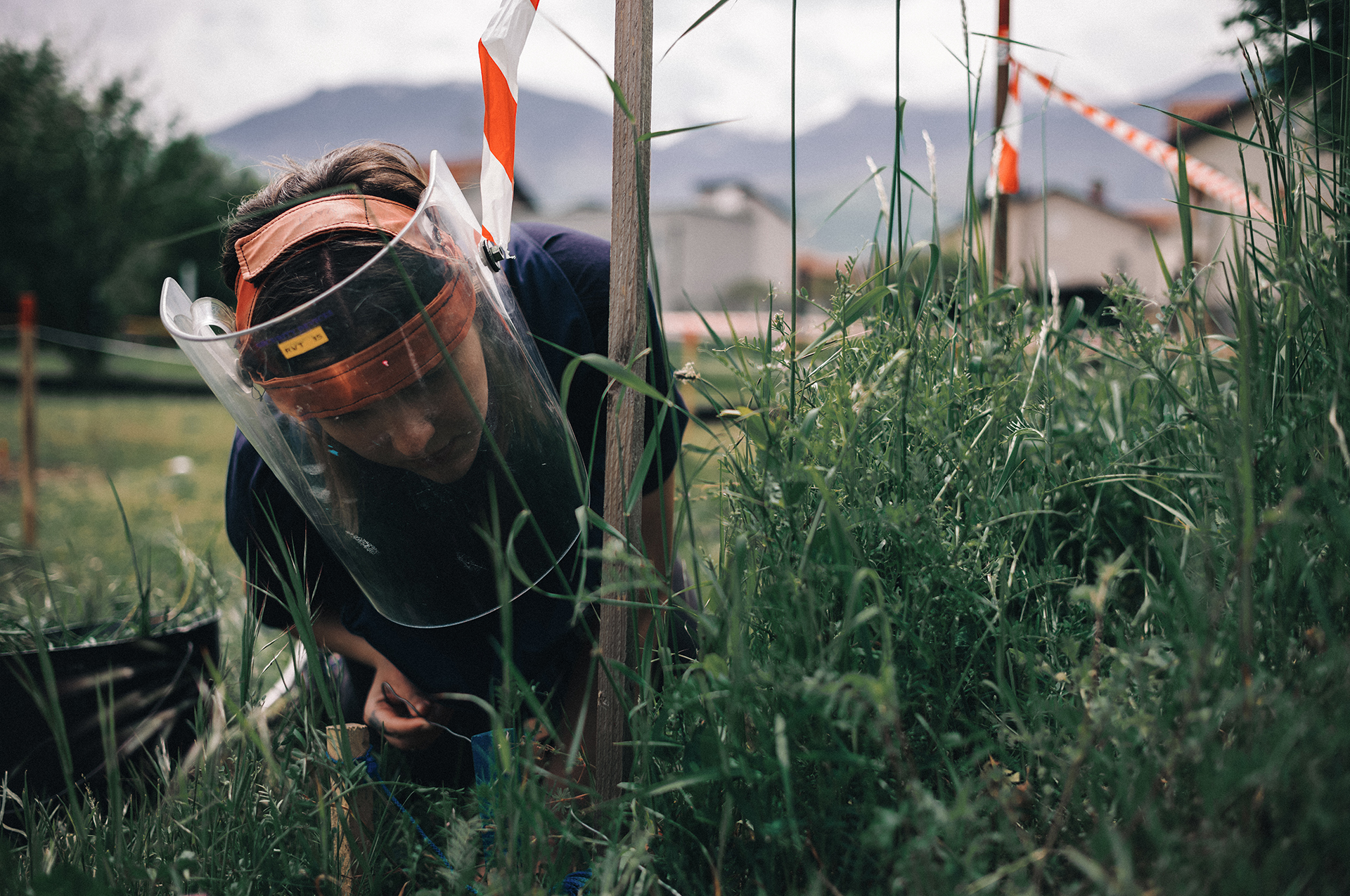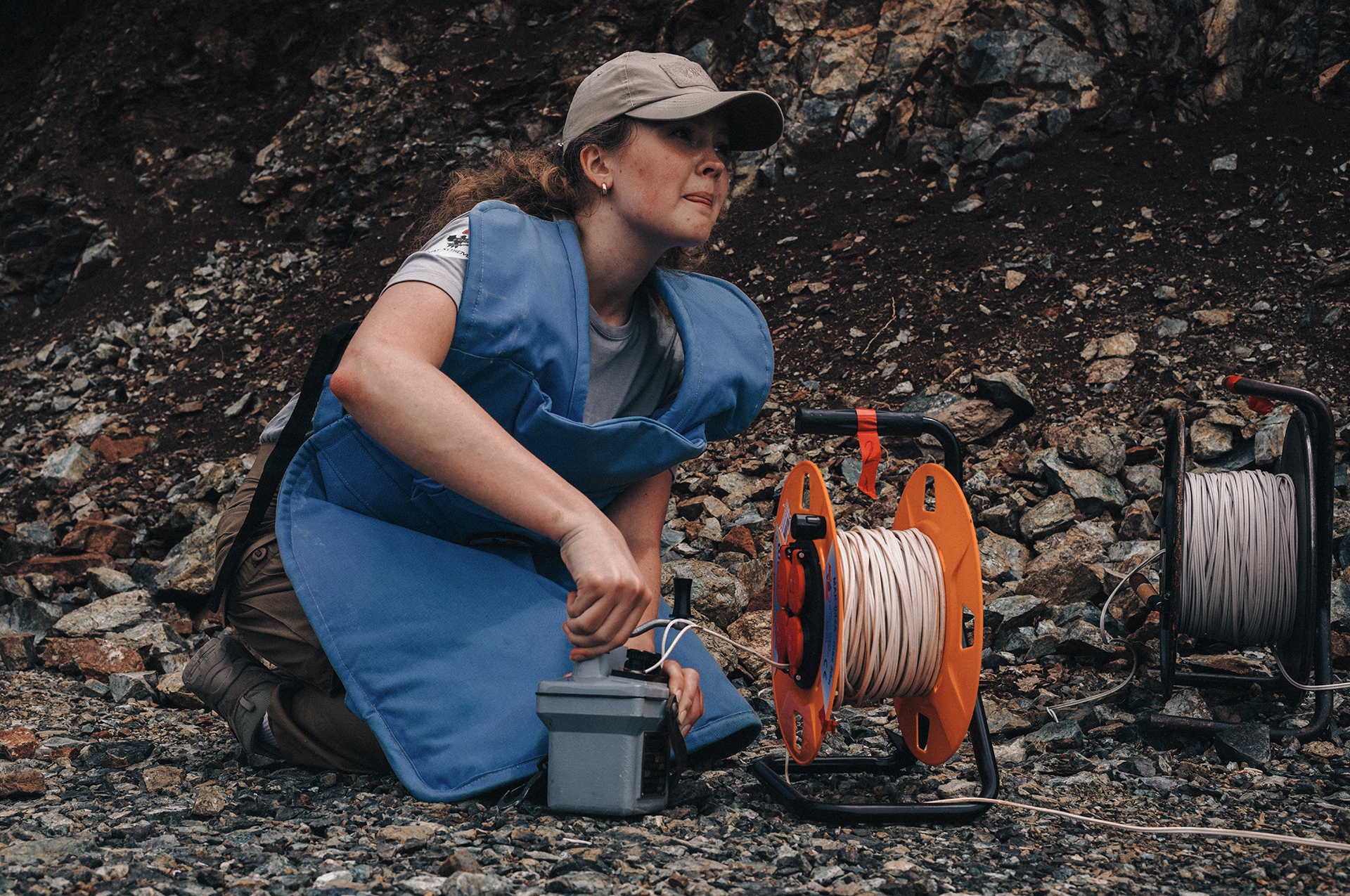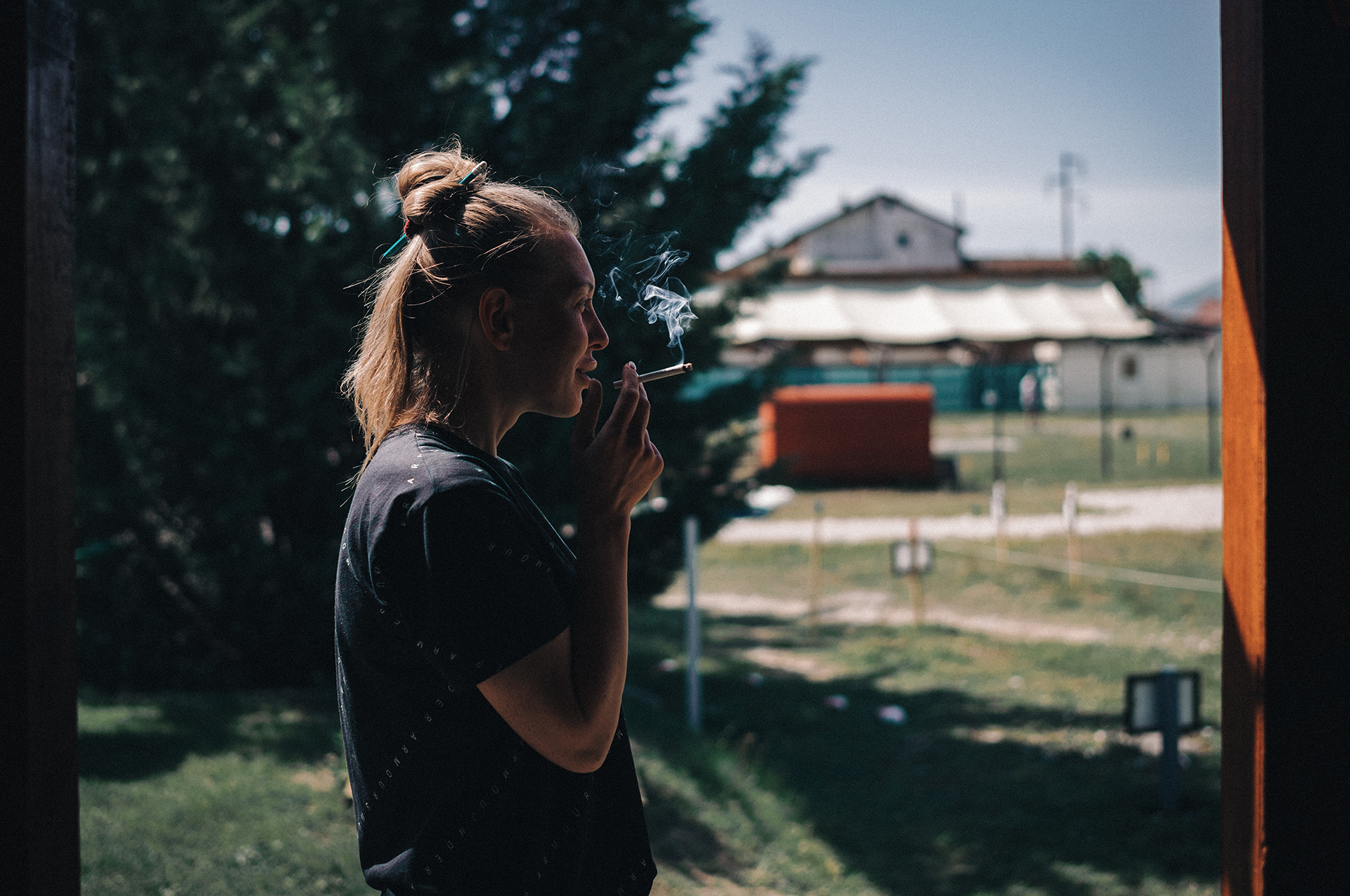KYIV, Ukraine – It was early, before dawn, on the morning of the 24th of February, when Dasha Starikova heard the first explosion. Frightened, she turned to her husband, Sacha, lying beside her in bed.
“Relax,” she recalled him saying to her. “It’s just a dream. It’s OK.”
Videos by VICE
Then the second explosion came, bringing with it a nightmare far worse than anything Starikova could’ve ever imagined. The Russian army was attacking a military airfield near the couple’s home in Kramatorsk, in eastern Ukraine. It was then she knew the full-scale invasion had begun.
“It’s our vision of how the war started,” Starikova said later. “Two big booms at 4AM.”
Six months on, more than a quarter of Ukrainian territory is now contaminated with explosives that have either been dropped, launched, or laid by Russian forces. US intelligence officials estimate that up to 60 percent of Russian munitions are failing to detonate, meaning that, while shelling in some areas has stopped, 14.5 million people are still at risk of being injured or killed by unexploded ordnance, or UXOs.

Before this new, brutal phase of the conflict, Starikova, 25, had already been working to demine parts of Eastern Ukraine, where UXOs had been piling up ever since Russian-backed separatists seized large parts of the country’s Donbas region in 2014, in a conflict that expanded significantly when the Kremlin launched its full invasion this February. At the time, both she and her husband had signed on with The HALO Trust – an international humanitarian organisation that clears landmines and other explosive debris – to remove the remnants of war from the Donbas region of eastern Ukraine, which has seen fighting since 2014.
When Russia advanced toward Kyiv in late February, Sacha Starikova, like many in the country, took up arms. Ukrainian President Volodymyr Zelenskyy had declared martial law, making it impossible for most men aged 18 to 60 to leave, but he knew his wife could make it out and he wanted her gone.
“I don’t want to worry about you,” Dasha remembered her husband telling her. “I want you to be safe.”
With her cat, Milka, and suitcase in tow, Starikova fled to Slovakia in central Europe. For the first few weeks she volunteered, aiding refugees like herself, yet she was still thinking of ways she could get back to Ukraine, back to her husband, back to help. She soon learned that a few of her fellow HALO Trust employees had been selected to undergo specialised training in Kosovo that would enable them to return to Ukraine afterwards and begin demining newly liberated towns and villages.
“I just want to continue my work,” Starikova told VICE World News in May. “My husband told me that I can stay in Slovakia for more time, but I decided not to do it because I want to continue my work. If I will lay down on the bed, I will go insane.”

Ironically, up until 2017, demining was one of 458 occupations women were barred from performing in Ukraine. Now they’re some of the only people able to leave the country to get the training necessary to do this type of dangerous work. The training Starikova, and seven other Ukrainian women, were to undergo was a four-week course that, in the end, would certify them as deminers under International Mine Action Standards, a designation endorsed by the United Nations to improve “safety, quality, and efficiency” in clearing UXOs.
Ben Remfrey, a former British soldier in the Royal Engineers who now runs one of the world’s top training centers for mine action education, created the course with some like-minded people in the explosive ordnance disposal (EOD) industry. He and his colleagues started a charity called Friends of Ukraine EOD to fully fund the programme and provide it to Ukrainian students for free.
“In the short term, we’ve been advising the operators on the ground inside Ukraine how to deal with some of the munitions that they’re coming across, because they’ve got no idea,” Remfrey told VICE World News. “We’re advising them how to render safe some of these airdropped weapons, or cluster munitions, or destroy in situ. All the while, what we’re doing is we’re trying to move towards a concept of train and equip.”
By May, the charity had raised enough money to fly Starikova and the other Ukrainian women to Kosovo, where Remfrey’s training center is located.
“As far as I know, it’s the first training of its type – to international standards – that’s happened for any Ukrainian since the beginning of the Russian invasion,” Remfrey said.

Even as Russia began to direct its troops away from Kyiv to concentrate its assault on cities in the east, Zelenskyy has continued to remind civilians that Russian soldiers are leaving behind thousands of unexploded bombs, mines, and boobytraps. And while members of the State Emergency Services and Ministry of Defence engineers have been working tirelessly to clear away what they can so that people attempting to return to their homes can do so safely, experts say the speed at which their clearing areas may do more harm than good.
“When you do clearance of civilian residential areas, you have to do it to a specific, international standard, whereby you can sign off at the end of it and say that that area is 100 percent clear of unexploded ordnance,” Remfrey told VICE World News. “Ultimately, a lot of the guys and girls involved in clearing up UXO, they get the job done, but not always safely to themselves and others.”
Remfrey’s MAT Kosovo training centre – MAT stands for mine action training – sits at the base of the Accursed Mountains in the city of Peja. The rich green hillsides and valleys that surround it were once counted “among the world’s most dangerous real estate,” not for the threat of natural disaster or a high crime-rate, but the tens of thousands of unexploded mines and soda can-sized bomblets that littered the ground at the end of the Kosovo War.
In 1999, NATO began a 78-day bombing campaign against the Federal Republic of Yugoslavia, dropping nearly 300,000 cluster munitions during their raids in an effort to stymie the ethnic cleansing of Albanians. Much like what’s happening today in Ukraine, thousands of those explosives failed to detonate, and continued to maim, dismember, and kill civilians after the war’s end.
Twenty years later, explosives are still being unearthed, making Kosovo – which unilaterally declared independence from Serbia in 2008 – the perfect training ground for Starikova and the rest of the Ukrainian women who must learn how to safely dispose of UXOs.

“I need to train every day, more and more,” said Capt. Maryna Labunets, a member of the Ukrainian National Guard who was selected to join the training in Kosovo. “This is that kind of job where it’s impossible to learn something once and use it your whole life.”
Before Russia’s full-scale invasion, Labunets was a captain in the guard’s fire squadron. She’d never considered working as deminer until bombs began falling on Kyiv.
“I wasn’t even remotely interested in demining,” Labunets said. “After the invasion, as soon as this job was offered to me, I accepted it.”
During the month-long training, the women were taught how to identify different types of munitions the Russians are using, learned how to spot tripwires and booby traps, and how to render explosives safe or dispose of them, if necessary, to help protect returning civilians.
By August 2022, civilian deaths in Ukraine were estimated at more than 5,200, with at least 7,000 more people injured. Additionally, the Ministry of Defence has said some 9,000 Ukrainian soldiers have been killed in the fighting. But the reality is, those numbers probably don’t even come close to the actual tally of casualties. Often, the true extent of what happens in war zones doesn’t come to light until occupied towns and villages are liberated.
“[Demining] is one of the most important jobs in Ukraine, as there are huge areas being de-occupied now, and they are mined,” Labunets said.

On the 9th of August, the US State Department pledged $89 million to Ukraine to address “the urgent humanitarian challenges posed by explosive remnants of war.” The money, officials said, will go towards deploying 100 demining teams and a “large-scale train and equip project” to strengthen Ukraine’s demining and EOD capacity.
Meanwhile, both Labunets and Starikova have since returned to Ukraine, where they’re working in areas the Russians have withdrawn from. Labunets is the first woman in the history of the National Guard to carry out demining work, and Starikova – who was also able to briefly reunite with her husband – has rejoined her HALO Trust team, surveying destroyed neighborhoods.
“The situation here is worse than I imagined earlier,” said Starkova. “When I saw the street the first time, where almost all houses was destroyed – it was just – I imagined something like this, but not this. I can’t imagine how many years we will need to clear all of Ukraine. I think it’s hundreds, hundreds of years. Maybe more.”




